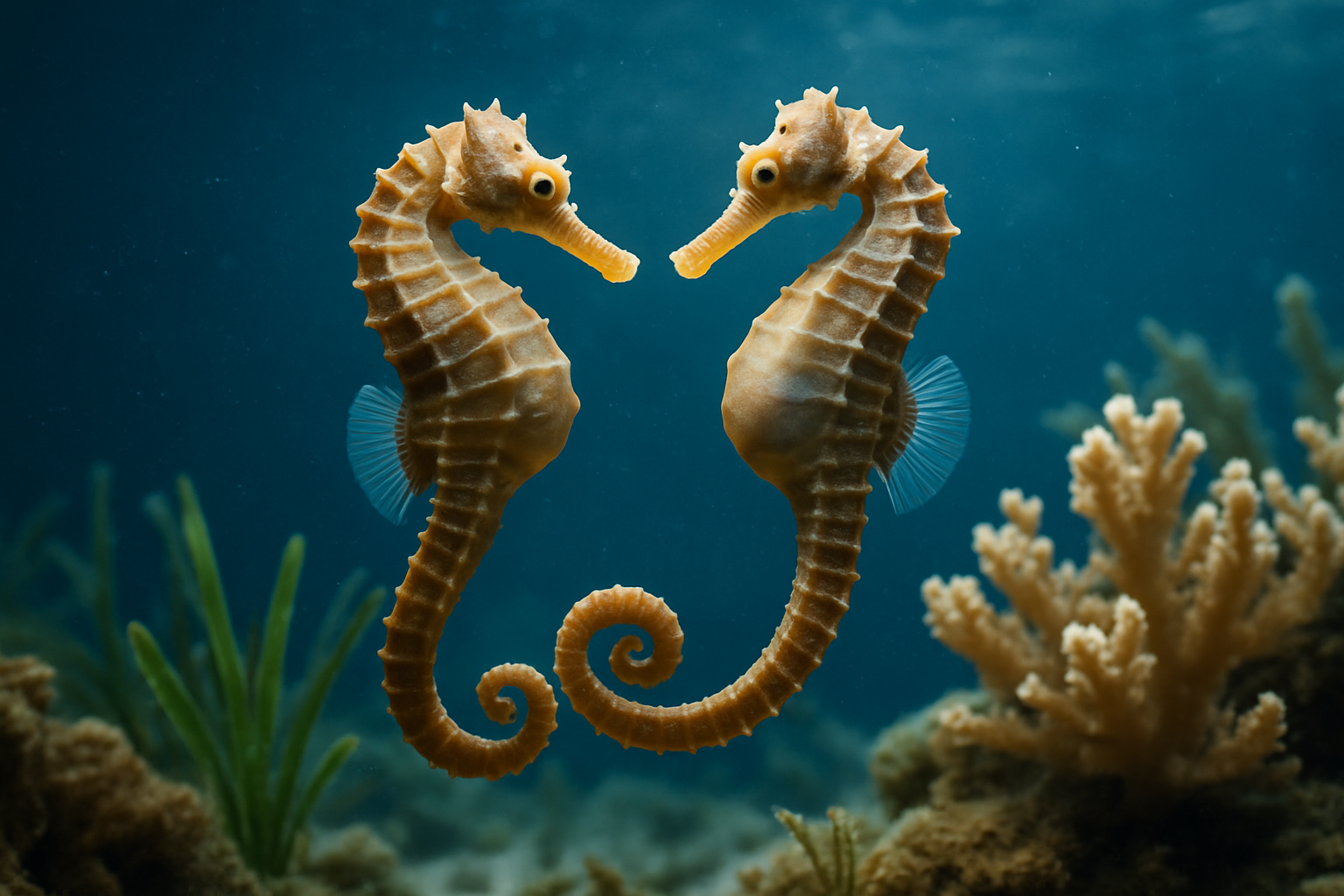Decoding the Intricate Dance of Seahorses
Seahorses, those mesmerizing, slow-moving creatures of the sea, have captured human fascination for centuries. It's not just their unique, horse-like appearance that intrigues us, but also their complex mating dance, a spectacle that's as intricate as it is captivating.

An Unforgettable Mating Ritual
The mating dance of seahorses is a beautiful and elaborate ritual that can last for several days. It involves a series of intricate movements and displays. The female seahorse, which is often larger than the male, initiates the dance by swimming towards the male and entwining her tail around his. The male responds by inflating his brood pouch, an abdominal sac where he carries the eggs, in an impressive display of courtship. The pair then swims in unison, performing a series of twirls, spins, and pirouettes. This aquatic ballet is not just a spectacle of beauty but also a test of endurance and compatibility.
Seahorses: Nature’s Exception
Seahorses are one of the few species in the animal kingdom where the males bear the offspring. After the mating dance, the female deposits her eggs into the male’s brood pouch. These eggs are then fertilized by the male, who carries them for a period ranging from 10 to 45 days, depending on the species. When the time comes, the male seahorse goes into labor, contracting his muscles to release hundreds, even thousands, of tiny seahorses into the water. This display of paternal care is fascinating and unique, challenging traditional gender roles in the animal kingdom.
The Role of Temperature and Light
Recent studies have shown that environmental factors such as temperature and daylight hours can significantly influence the timing and frequency of seahorse mating dances. Seahorses are more likely to mate during warmer months when daylight hours are longer. This suggests that seahorses, like many other animals, are sensitive to seasonal changes, adjusting their reproductive behaviors accordingly to ensure the survival of their offspring.
Conservation Concerns and Efforts
Despite their captivating beauty and unique reproductive behaviors, seahorses are facing numerous threats in the wild. Overfishing, habitat destruction, and climate change are causing a decline in seahorse populations globally. Recognizing the urgent need for conservation, several organizations are working tirelessly to protect these fascinating creatures. Efforts are being made to establish protected marine areas, regulate fishing practices, and raise public awareness about the plight of seahorses.
Final Thoughts: The Importance of Seahorse Conservation
Understanding the intricate mating dance of seahorses not only gives us a glimpse into their fascinating world but also emphasizes the importance of their conservation. Seahorses play a vital role in marine ecosystems, acting as indicators of healthy seagrass beds and coral reefs. By protecting seahorses, we’re not just preserving their enchanting dance for future generations to marvel at, but also ensuring the health and diversity of our oceans.





